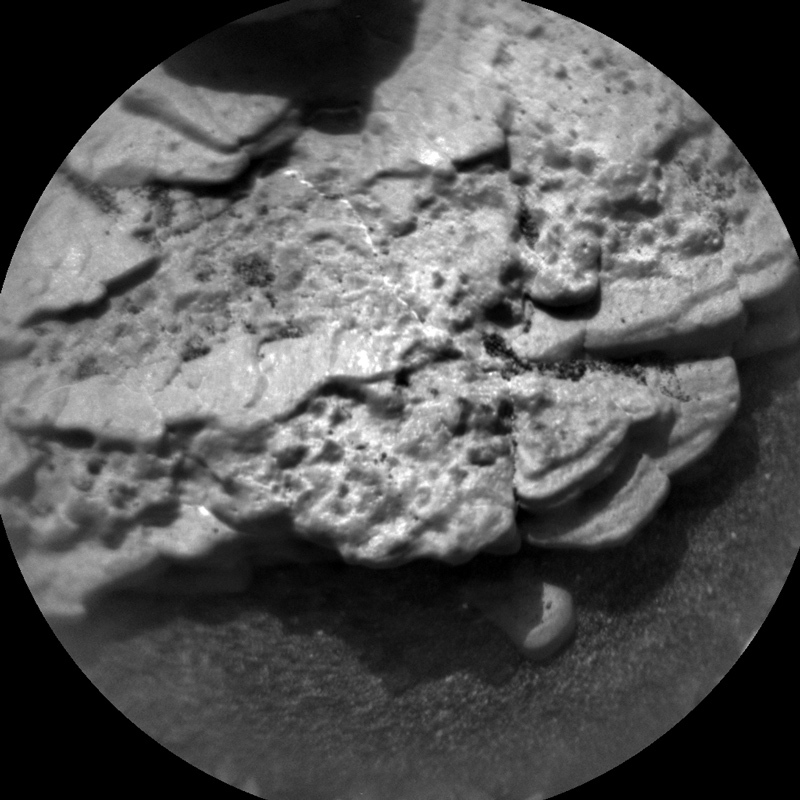3 min read

Curiosity has been in the area of the “Mary Anning” targets for a while now, and that’s for a very good reason: she came here to find the ideal rocks for a very special SAM experiment (see the blog from sols 2867-2869). First, we confirmed we had the rock-type we desired. Appearance can always deceive (and yes, that’s not just for rocks, we all know that!). Chemistry, however, doesn’t lie, and ChemCam and APXS have confirmed that we have under the drill what we came for. SAM has confirmed that all procedures are now ready to go. Thus, the big headline today is: We are "go" for drilling the “Mary Anning 3” target in this plan and to perform the SAM wet chemistry experiment later this week.
As it’s well-tested routine for our drill sequence by now, the first thing to do after the drilling is to image the drill hole. ChemCam will perform a passive spectral investigation, and Mastcam will do a multispectral measurement on the drill fines. While at it, Mastcam also takes a small 5x1 mosaic of the nearby target “Upper Ollach” again. We are taking advantage of the fact that – for the drilling – we are in the same place for several sols in a row. Using repeated imaging of this target we can detect changes that occur over time, and this way judge the current wind regime. Remember the blog “Sols 2864-2866: Spot the Difference!”? Those dust devils are one way to watch out for wind, looking at how grains shift over time is another.
Today’s image at the top of this blog features the third topic of the day: While we are here, we are of course also looking for all the small features we can spot in our surroundings. Tiny dark layers in a nearby target “Ayton” caught our eye a few sols ago and were investigated by ChemCam. MAHLI is looking at them this sol. We are also investigating their chemistry further, as ChemCam will add more measurements on those features to improve measurement statistics and thus understand better what the dark nodular features are made of. ChemCam targets for that are "Toab" and another raster on the Ayton block. ChemCam is also looking at the target “Sartle,” which has a bit more greyish appearance and some white material – suspected calcium sulfate, at least if it is what it looks like. Let’s see, if looks deceive – or not!
In other parts of the plan, DAN is doing a DAN passive, and ENV continues to observe the current atmospheric situation with dust opacity and dust devil observations. Mastcam is also adding to the mosaic they are building over the past sols with a 14x3 mosaic. All the things one can do while drilling, and that are very exciting for science to analyse a wider area for relationships of the observed structures and textures … but the big nail-biting moment will be when we learn if the wet chemistry experiment was successful. Fingers crossed for SAM!
Written by Susanne Schwenzer, Planetary Geologist at The Open University







